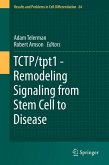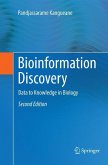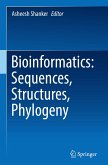This volume summarizes our current understanding of the structural basis of the functions of arrestin family of proteins. Arrestins were first discovered as key players in the desensitization of G protein-coupled receptors (GPCRs). Recent studies showed that arrestins are important signal transducers in their own right, organizing multi-protein complexes and scaffolding numerous signaling cascades that regulate cell proliferation, differentiation, and apoptotic death.
Here arrestin functions are described primarily from the structural prospective. The book covers basal structure of arrestin proteins, receptor binding-induced conformational changes in arrestins, as well as the structure of "pre-activated" mutants. Particular focus is on the arrestin elements interacting with numerous binding partners, GPCRs and cytoplasmic signaling proteins. We expect that this information and insights will help to understand and exploit the phenomenon of signaling bias, which is a new promising direction in drug discovery.
The chapters are written by the world-class specialists in the field, mostly the people who actually contributed the data discussed. The book gives coherent historical prospective and describes the most recent findings.
The book would be particularly useful for scientists in academia and industry working in the fields of pharmacology, cell biology, structural biology, and drug discovery. We expect that the focus on the molecular basis of protein-protein interactions would help to develop novel tools for engaging this important type of targets for research and therapeutic purposes.
Here arrestin functions are described primarily from the structural prospective. The book covers basal structure of arrestin proteins, receptor binding-induced conformational changes in arrestins, as well as the structure of "pre-activated" mutants. Particular focus is on the arrestin elements interacting with numerous binding partners, GPCRs and cytoplasmic signaling proteins. We expect that this information and insights will help to understand and exploit the phenomenon of signaling bias, which is a new promising direction in drug discovery.
The chapters are written by the world-class specialists in the field, mostly the people who actually contributed the data discussed. The book gives coherent historical prospective and describes the most recent findings.
The book would be particularly useful for scientists in academia and industry working in the fields of pharmacology, cell biology, structural biology, and drug discovery. We expect that the focus on the molecular basis of protein-protein interactions would help to develop novel tools for engaging this important type of targets for research and therapeutic purposes.








